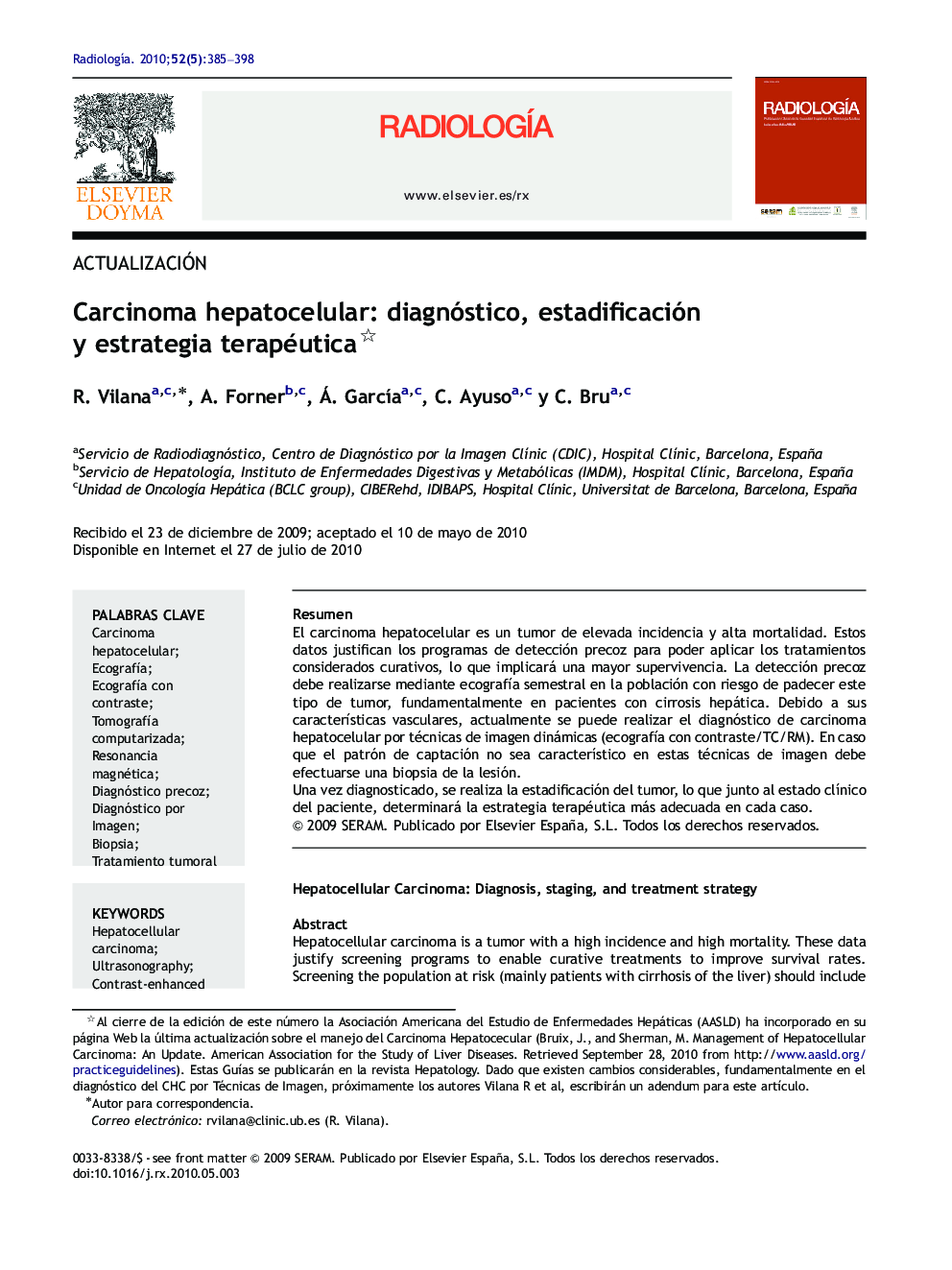| Article ID | Journal | Published Year | Pages | File Type |
|---|---|---|---|---|
| 4245729 | Radiología | 2010 | 14 Pages |
ResumenEl carcinoma hepatocelular es un tumor de elevada incidencia y alta mortalidad. Estos datos justifican los programas de detección precoz para poder aplicar los tratamientos considerados curativos, lo que implicará una mayor supervivencia. La detección precoz debe realizarse mediante ecografía semestral en la población con riesgo de padecer este tipo de tumor, fundamentalmente en pacientes con cirrosis hepática. Debido a sus características vasculares, actualmente se puede realizar el diagnóstico de carcinoma hepatocelular por técnicas de imagen dinámicas (ecografía con contraste/TC/RM). En caso que el patrón de captación no sea característico en estas técnicas de imagen debe efectuarse una biopsia de la lesión.Una vez diagnosticado, se realiza la estadificación del tumor, lo que junto al estado clínico del paciente, determinará la estrategia terapéutica más adecuada en cada caso.
Hepatocellular carcinoma is a tumor with a high incidence and high mortality. These data justify screening programs to enable curative treatments to improve survival rates. Screening the population at risk (mainly patients with cirrhosis of the liver) should include ultrasonographic examination twice yearly. Given the vascular characteristics of hepatocellular carcinoma, it can be detected using dynamic techniques (contrast-enhanced ultrasonography, CT, and MRI). In cases in which the enhancement pattern is not characteristic, these techniques should be complemented with lesion biopsy.Once hepatocellular carcinoma is diagnosed, the tumor is staged, and together with the clinical condition of the patient, the stage will determine the most appropriate treatment strategy in each case.
